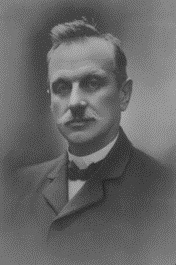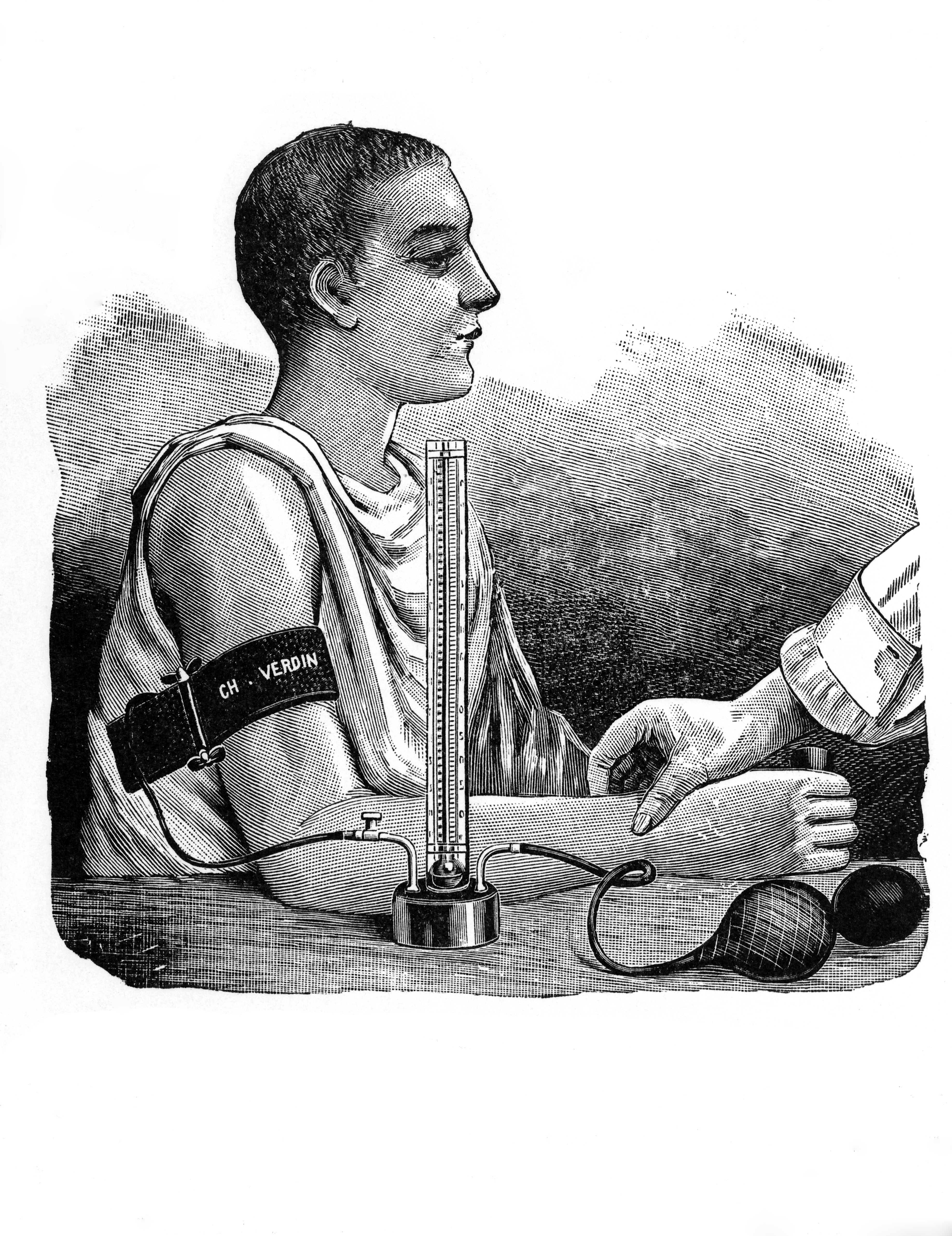Scipione Riva-Rocci on:
[Wikipedia]
[Google]
[Amazon]

 Scipione Riva Rocci (7 August 1863 in
Scipione Riva Rocci (7 August 1863 in
 In 1928 he retired from his medical positions due to a neurological condition, probably
In 1928 he retired from his medical positions due to a neurological condition, probably 
www.whonamedit.com
(biography) * http://himetop.wikidot.com/scipione-riva-rocci-s-tomb (photographs of Riva-Rocci's tomb) * https://www.woodlibrarymuseum.org/museum/item/14/riva-rocci-sphygmomanometer (photographs of a Riva-Rocci sphygmomanometer) {{DEFAULTSORT:Riva-Rocci, Scipione 1863 births 1937 deaths People from Almese Italian pediatricians 19th-century Italian inventors Italian internists University of Turin alumni

 Scipione Riva Rocci (7 August 1863 in
Scipione Riva Rocci (7 August 1863 in Almese
Almese (Piedmontese: ''Almèis'') is a '' comune'' (municipality) in the Metropolitan City of Turin in the Italian region Piedmont
it, Piemontese
, population_note =
, population_blank1_title =
, population_blank1 =
, demog ...
, Piedmont
it, Piemontese
, population_note =
, population_blank1_title =
, population_blank1 =
, demographics_type1 =
, demographics1_footnotes =
, demographics1_title1 =
, demographics1_info1 =
, demographics1_title2 ...
– 15 March 1937 in Rapallo
Rapallo ( , , ) is a municipality in the Metropolitan City of Genoa, located in the Liguria region of northern Italy.
As of 2017 it had 29,778 inhabitants. It lies on the Ligurian Sea coast, on the Tigullio Gulf, between Portofino and Chiav ...
, Liguria
Liguria (; lij, Ligûria ; french: Ligurie) is a Regions of Italy, region of north-western Italy; its Capital city, capital is Genoa. Its territory is crossed by the Alps and the Apennine Mountains, Apennines Mountain chain, mountain range and is ...
) was an Italian internist, pathologist
Pathology is the study of the causes and effects of disease or injury. The word ''pathology'' also refers to the study of disease in general, incorporating a wide range of biology research fields and medical practices. However, when used in th ...
and pediatrician
Pediatrics ( also spelled ''paediatrics'' or ''pædiatrics'') is the branch of medicine that involves the medical care of infants, children, adolescents, and young adults. In the United Kingdom, paediatrics covers many of their youth until the ...
. He is best known for the invention of an easy-to-use cuff-based version of the mercury sphygmomanometer
A sphygmomanometer ( ), a blood pressure monitor, or blood pressure gauge, is a device used to measure blood pressure, composed of an inflatable cuff to collapse and then release the artery under the cuff in a controlled manner, and a mercury ...
for the measurement of blood pressure
Blood pressure (BP) is the pressure of circulating blood against the walls of blood vessels. Most of this pressure results from the heart pumping blood through the circulatory system. When used without qualification, the term "blood pressure ...
.
Biography
Riva Rocci was born on 7 August in Almese in 1863. He graduated inmedicine
Medicine is the science and practice of caring for a patient, managing the diagnosis, prognosis, prevention, treatment, palliation of their injury or disease, and promoting their health. Medicine encompasses a variety of health care pr ...
and surgery
Surgery ''cheirourgikē'' (composed of χείρ, "hand", and ἔργον, "work"), via la, chirurgiae, meaning "hand work". is a medical specialty that uses operative manual and instrumental techniques on a person to investigate or treat a pa ...
in 1888 from the University of Turin
The University of Turin (Italian language, Italian: ''Università degli Studi di Torino'', UNITO) is a public university, public research university in the city of Turin, in the Piedmont (Italy), Piedmont region of Italy. It is one of the List ...
. From 1888 to 1898 he acted as assistant lecturer at the propaedeutic medical clinic in Turin under the guidance of Carlo Forlanini and assisted him in the application of "iatrogenic
Iatrogenesis is the causation of a disease, a harmful complication, or other ill effect by any medical activity, including diagnosis, intervention, error, or negligence. "Iatrogenic", ''Merriam-Webster.com'', Merriam-Webster, Inc., accessed 27 ...
pneumothorax
A pneumothorax is an abnormal collection of air in the pleural space between the lung and the chest wall. Symptoms typically include sudden onset of sharp, one-sided chest pain and shortness of breath. In a minority of cases, a one-way valve i ...
" for treatment of pulmonary tuberculosis
Tuberculosis (TB) is an infectious disease usually caused by '' Mycobacterium tuberculosis'' (MTB) bacteria. Tuberculosis generally affects the lungs, but it can also affect other parts of the body. Most infections show no symptoms, ...
. In 1894 he graduated in pathology
Pathology is the study of the causes and effects of disease or injury. The word ''pathology'' also refers to the study of disease in general, incorporating a wide range of biology research fields and medical practices. However, when used in ...
and in 1907 in pediatrics
Pediatrics ( also spelled ''paediatrics'' or ''pædiatrics'') is the branch of medicine that involves the medical care of infants, children, adolescents, and young adults. In the United Kingdom, paediatrics covers many of their youth until the ...
. In 1898, he followed Forlanini to the University of Pavia
The University of Pavia ( it, Università degli Studi di Pavia, UNIPV or ''Università di Pavia''; la, Alma Ticinensis Universitas) is a university located in Pavia, Lombardy, Italy. There was evidence of teaching as early as 1361, making it one ...
where he continued to contribute to the development of Forlanini's method by showing that the technique did not have a major adverse effect on lung
The lungs are the primary organs of the respiratory system in humans and most other animals, including some snails and a small number of fish. In mammals and most other vertebrates, two lungs are located near the backbone on either side of ...
function. From 1900 until 1928 was chief clinician and director of the civic hospital in Varese
Varese ( , , or ; lmo, label=Varesino, Varés ; la, Baretium; archaic german: Väris) is a city and ''comune'' in north-western Lombardy, northern Italy, north-west of Milan. The population of Varese in 2018 has reached 80,559.
It is the ca ...
, and helped to modernize the hospital by opening sanatorium wings and introducing vaccination, radiology and other methods to fight tuberculosis. From 1909 to 1916, he occupied the first chair of pediatrics at Pavia University.
 In 1928 he retired from his medical positions due to a neurological condition, probably
In 1928 he retired from his medical positions due to a neurological condition, probably encephalitis lethargica
Encephalitis lethargica is an atypical form of encephalitis. Also known as "sleeping sickness" or "sleepy sickness" (distinct from tsetse fly-transmitted sleeping sickness), it was first described in 1917 by neurologist Constantin von Econom ...
, which he may have contracted from a patient or an autopsy during an epidemic in 1921. He spent the last years of his life in ill-health with paralysis agitans
Parkinson's disease (PD), or simply Parkinson's, is a long-term degenerative disorder of the central nervous system that mainly affects the motor system. The symptoms usually emerge slowly, and as the disease worsens, non-motor symptoms becom ...
, and died on 15 March 1937 in Rapallo. He was buried in the small cemetery of San Michele di Pagana.

Invention of a sphygmomanometer
Riva Rocci's major contribution to medicine was the invention of an easy-to-use version of the mercurysphygmomanometer
A sphygmomanometer ( ), a blood pressure monitor, or blood pressure gauge, is a device used to measure blood pressure, composed of an inflatable cuff to collapse and then release the artery under the cuff in a controlled manner, and a mercury ...
which measured brachial blood pressure. The key element of this design was the use of a cuff that encircled the arm - previous designs had used rubber bulbs filled with water or air to manually compress the artery or other technically difficult methods to measure pressure.
In 1896, Riva Rocci published his work describing the new sphygmomanometer in the Gazzetta Medica di Torino. In total he published four papers on the design and usage of the device between 1896 and 1897. His design included every-day objects such as an inkwell
An inkwell is a small jar or container, often made of glass, porcelain, silver, brass, or pewter, used for holding ink in a place convenient for the person who is writing. The artist or writer dips the brush, quill, or dip pen into the inkwell ...
, some copper
Copper is a chemical element with the symbol Cu (from la, cuprum) and atomic number 29. It is a soft, malleable, and ductile metal with very high thermal and electrical conductivity. A freshly exposed surface of pure copper has a pink ...
pipe, bicycle inner tubing and a quantity of mercury. Riva Rocci measured the peak (systolic) blood pressure by observing the cuff pressure at which the radial pulse was no longer palpable. This approach did not allow the measurement of diastolic blood pressure, although it was possible to estimate mean arterial pressure with the device, albeit with some difficulty.
The American neurosurgeon
Neurosurgery or neurological surgery, known in common parlance as brain surgery, is the medical specialty concerned with the surgical treatment of disorders which affect any portion of the nervous system including the brain, spinal cord and peri ...
, Harvey Cushing
Harvey Williams Cushing (April 8, 1869 – October 7, 1939) was an American neurosurgeon, pathologist, writer, and draftsman. A pioneer of brain surgery, he was the first exclusive neurosurgeon and the first person to describe Cushing's disease ...
(1869-1939) visited Riva Rocci at Pavia in 1901 and made drawings and was given an example of his device. On his return to the US he made a similar device with some improvements and used it successfully in Johns Hopkins Hospital
The Johns Hopkins Hospital (JHH) is the teaching hospital and biomedical research facility of the Johns Hopkins School of Medicine, located in Baltimore, Maryland, U.S. It was founded in 1889 using money from a bequest of over $7 million (1873 ...
, most notably in intracranial surgery. Cushing, with support from Theodore Janeway in New York City and George Crile in Cleveland, played a major role in popularizing Riva Rocci's mercury sphygmomanometer. Subsequent improvements to the device included the use of a wider cuff (the original was only 5 cm wide) and the use of Korotkoff sounds to determine systolic and diastolic blood pressure. Riva Rocci always refused to patent his invention and did not make any financial gains from its widespread use.
Memorials
* Almese, his native town, has dedicated the local middle school to him. * Riva Rocci's initials RR are used to indicate blood pressure measured with his technique.References
External links
www.whonamedit.com
(biography) * http://himetop.wikidot.com/scipione-riva-rocci-s-tomb (photographs of Riva-Rocci's tomb) * https://www.woodlibrarymuseum.org/museum/item/14/riva-rocci-sphygmomanometer (photographs of a Riva-Rocci sphygmomanometer) {{DEFAULTSORT:Riva-Rocci, Scipione 1863 births 1937 deaths People from Almese Italian pediatricians 19th-century Italian inventors Italian internists University of Turin alumni